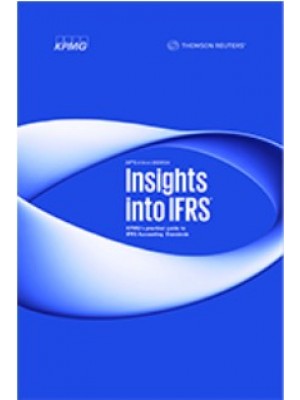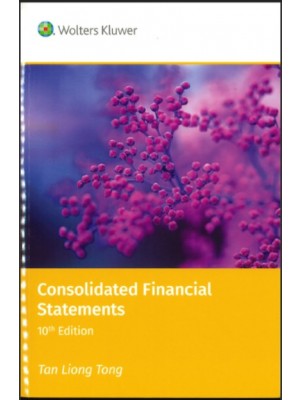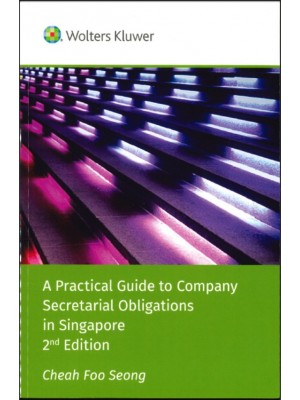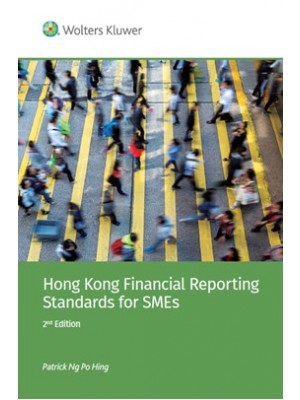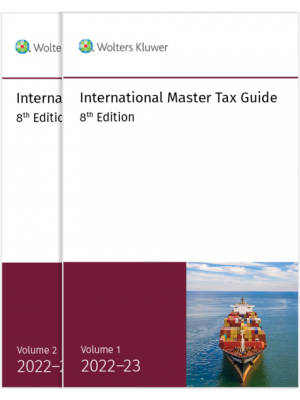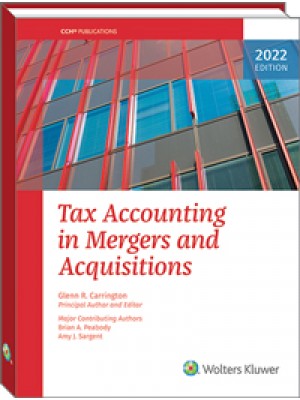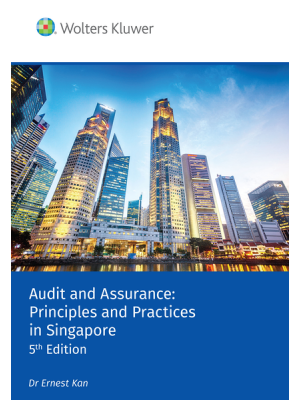About the Authors xvii
Contributors xix
Preface xxi
INTRODUCTION Including the FASB Codification 1
CHAPTER 1 Responsibilities for Fiscal Management 5
1.1 Keeping Financial Records for the Organization 6
1.2 Preparing Accurate and Meaningful Financial Statements 6
1.3 Implementing a Budget and Anticipating Financial Problems 7
1.4 Safeguarding Financial Assets and Providing Effective Internal Controls 8
1.5 Complying with Federal and State Reporting and Regulatory Requirements 9
1.6 Communicating Fiscal Information to the Board of Directors and the Audit Committee 9
1.7 Ten Key Points to Consider in Not-for-Profit Fiscal Management 10
1.8 Conclusion 14
PART I KEY FINANCIAL CONCEPTS 15
CHAPTER 2 Accounting Distinctions between Not-for-Profit and Commercial Organizations 17
2.1 Stewardship versus Profitability 17
2.2 Principal Areas of Accounting Differences 18
2.3 Conclusion 22
CHAPTER 3 Cash- versus Accrual-Basis Accounting 23
3.1 Cash and Accrual Statements Illustrated 23
3.2 Combination Cash Accounting and Accrual Statements 27
3.3 Modified Cash Basis 29
3.4 Legal Requirements 30
3.5 Conclusion 30
CHAPTER 4 Fund Accounting and Internal Financial Reporting 31
4.1 Fund Accounting Defined 33
4.2 Categories of Funds 34
4.3 Alternative Fund Groupings 37
4.4 Typical ‘‘Fund’’ Financial Statements 38
4.5 Transfers between Funds 40
4.6 Elimination of Funds for Reporting Purposes 41
4.7 Conclusion 43
CHAPTER 5 Fixed Assets and Depreciation 45
5.1 General Principles—Working Definitions 45
5.2 Property and Equipment—Classes and Kinds of Assets 47
5.3 Fixed Assets Where Title May Revert to Grantors 49
5.4 Collections 50
5.5 Fair Value Measurement 51
5.6 Contributions Restricted for Purchase of Fixed Assets 51
5.7 Impairment or Disposal of Long-Lived Assets 52
5.8 Conclusion and Recommendations 55
CHAPTER 6 Investment Income, Gains and Losses, and Endowment Funds 57
6.1 Accounting Principles 58
6.2 Total Return Concept 68
CHAPTER 7 Affiliated Organizations, Pass-Through Transactions, and Mergers 73
7.1 Types of Relationships Often Found 74
7.2 Definition of the Reporting Entity 76
7.3 Mergers of Not-for-Profit Organizations 81
Appendix 7-A Factors to Be Considered in Deciding Whether a Pass-Through Gift Is Truly Revenue and Expense to a Pass-Through Entity 84
Appendix 7-B Transfers of Assets to a Not-for-Profit Organization or Charitable Trust That Raises or Holds Contributions of Others 87
Appendix 7-C Factors Related to Control That May Indicate That an Affiliated Organization (A) Should Be Combined with the Reporting Organization (R), If Other Criteria for Combination Are Met 91
CHAPTER 8 Contributions, Pledges, and Noncash Contributions 93
8.1 Expendable Current Support 94
8.2 Gifts-in-Kind 99
8.3 Support Not Currently Expendable 103
Appendix 8-A: Checklist: Factors to Be Considered in Deciding Whether a Particular Gift (for Operating Purposes) Should Be Classified as Purpose-Restricted or Not 114
Appendix 8-B: Checklist: Factors to Be Considered in Distinguishing Contracts for the Purchase of Goods or Services from Restricted Grants 116
Appendix 8-C: Checklist: Factors to Be Considered in Assessing Whether Contributed Services Are Considered to Require Specialized Skills 118
Appendix 8-D: Checklist: Factors to Be Considered in Determining Whether an Organization Would Typically Need to Purchase Services If Not Provided by Donation 120
Appendix 8-E: Checklist: Factors to Be Considered in Assessing Whether a Donor Has Made a Bona Fide Pledge to a Donee 123
Appendix 8-F: Checklist: Factors to Be Considered in Deciding Whether a Gift or Pledge Subject to Donor Stipulations Is Conditional or Restricted 126
CHAPTER 9 Accounting Issues Relating to Fundraising 129
9.1 Accounting for Gifts 130
9.2 Accounting for Fundraising Expenses 137
9.3 Other Tax Considerations 141
PART II FINANCIAL STATEMENT PRESENTATION 143
CHAPTER 10 Cash-Basis Financial Statements 145
10.1 Simple Cash-Basis Statement 145
10.2 Simple Statement with Last Year’s Figures and Budget 147
10.3 Combined Cash-Basis Income Statement and Balance Sheet 147
10.4 Separate Statement of Receipts and Disbursements and Statement of Net Assets 150
10.5 Statement of Income with Certain Cash Transactions Omitted 152
10.6 Modified Cash-Basis Statements 154
10.7 Conclusion 155
CHAPTER 11 Accrual-Basis Financial Statements 157
11.1 Simple Accrual-Basis Statements 157
11.2 Accrual-Basis Statements—Fundraising Organization 160
11.3 Accrual-Basis Statements—International Organization 163
11.4 Conclusion 166
CHAPTER 12 Multiclass Financial Statements 167
12.1 FASB Accounting Standards Codification 958, Not-for-Profit Entities 168
12.2 Preparation of Statement of Cash Flows 171
12.3 ‘‘Class’’ Financial Statements Explained 182
12.4 Columnar Format Presentation 191
12.5 A Complicated Set of Class Financial Statements 193
12.6 Summary or Condensed Statements 204
12.7 Conclusion 205
Appendix 12-A Financial Statements of Not-for-Profit Organizations—Review Points 206
PART III ACCOUNTING AND REPORTING GUIDELINES 211
CHAPTER 13 Voluntary Health and Welfare Entities 213
13.1 Accounting Principles 215
13.2 Accounting for Contributions 215
13.3 Accounting for Other Income 218
13.4 Accounting for Expenses 218
13.5 Accounting for Assets 218
13.6 Net Assets 219
13.7 Financial Statements 220
Appendix 13-A Checklist: Factors to Be Considered in Deciding Whether Allocation of Joint Costs of Multipurpose Activities (under ASC 958-720-55) Is Appropriate 235
Appendix 13-B Checklist: Consideration of Whether Items Might Be Reported as Operating or Nonoperating (within the Context of ASC 958-225-45) 238
CHAPTER 14 Colleges and Universities 241
14.1 Authoritative Pronouncements 242
14.2 The Principal Financial Statements 242
14.3 Accounting Principles 246
CHAPTER 15 The External Financial Statement Reporting Model for Organizations Reporting under GASB Standards 251
15.1 Introduction 252
15.2 Definition of a Government 252
15.3 Generally Accepted Accounting Principles 253
15.4 External Financial Reporting Model 254
15.5 Basic Financial Statements 255
15.6 The Reporting Entity 262
15.7 Assets, Liabilities, and Deferred Inflows/Outflows 264
15.8 Revenues and Expenses 272
15.9 Other Reporting Matters 277
CHAPTER 16 Health Care Organizations 281
16.1 Introduction 282
16.2 Accounting Guidance 282
16.3 Financial Statements 285
16.4 Accounting Principles 289
CHAPTER 17 Accounting Standards for Other Not-for-Profit Organizations 313
17.1 Accounting Principles 313
17.2 Financial Statements 317
17.3 Combined Financial Statements 317
17.4 Appendix 17-A:Checklist: Factors to Be Considered in Deciding Whether a Payment Described as Membership Dues Is Properly Recorded by the Recipient as Dues or as a Contribution 319
CHAPTER 18 Special Accounting Issues for Specific Organizations 323
18.1 Associations and Professional Societies 324
18.2 Churches 326
18.3 Clubs 327
18.4 Libraries 329
18.5 Museums 329
18.6 Performing Arts Organizations 330
18.7 Private Foundations 332
18.8 Religious Organizations Other Than Churches 334
18.9 Research and Scientific Organizations 335
18.10 Private Elementary and Secondary Schools 336
18.11 Public Broadcasting Stations 337
CHAPTER 19 The Financial Accounting Standards Board and Future Trends in Not-for-Profit Accounting 339
19.1 Financial Accounting Standards Board 340
19.2 Trends in Not-for-Profit Accounting 348
19.3 New FASB Statements of Financial Accounting Standards That Affect Not-For-Profit Organizations 353
19.4 Other FASB Pronouncements and Projects 359
19.5 Conclusion 362
PART IV CONTROLLING THE NOT-FOR-PROFIT ORGANIZATION 363
CHAPTER 20 The Importance of Budgeting 365
20.1 The Budget: A Plan of Action 365
20.2 Monthly and Quarterly Budgets 370
20.3 Timely Interim Statements 373
20.4 A Five-Year Master Plan 380
20.5 Conclusion 384
CHAPTER 21 Small Organizations—Obtaining the Right Accountant 385
21.1 Level of Accounting Services Needed 386
21.2 Personality Characteristics 388
21.3 Alternatives to Accountants 388
21.4 Timing in Hiring a Replacement 390
21.5 Conclusion 390
CHAPTER 22 Small Organizations—Providing Internal Control 391
22.1 Reasons for Internal Control 392
22.2 Fundamentals of Internal Control 393
22.3 Some Basic Controls 394
22.4 Fidelity Insurance 398
22.5 Conclusion 399
CHAPTER 23 Effective Internal Accounting Control for Not-for-Profit Organizations 401
23.1 Introduction to Internal Accounting Control 402
23.2 Elements of an Effective Internal Accounting Control System 406
23.3 Basic Internal Accounting Control System 411
23.4 Specific Nonprofit Internal Accounting Controls 419
CHAPTER 24 Independent Audits 427
24.1 Functions and Limitations 427
24.2 Benefits of an Independent Audit 432
24.3 Selecting a Certified Public Accountant 434
24.4 Public Accountants 435
24.5 Audit Committees 436
24.6 Conclusion 438
Appendix 24-A Checklist: Criteria for Selection of a CPA 440
Appendix 24-B Changing Role for the Audit Committee 443
Appendix 24-C Basic Template for an Audit Committee Charter 446
CHAPTER 25 Investments 453
25.1 Types of Investments 454
25.2 Valuation of Investments 456
25.3 Key Considerations When Investing in Alternative Investment Funds 458
25.4 Pooling versus Individual Investments 460
25.5 Calculating Share Values in Pooled Investments 463
25.6 Allocation of Pooled Income 466
25.7 Conclusion 467
PART V PRINCIPAL FEDERAL TAX AND COMPLIANCE REQUIREMENTS 469
CHAPTER 26 E-Business for Not-for-Profit Organizations: How Can Not-for-Profits Manage the Risks to Maximize E-Business Opportunities? 471
26.1 Whether You Call It E-Business or Technology-Enabled Business, It Still Matters 472
26.2 Ask Yourself These Questions 474
26.3 Objectives 475
26.4 How Did We Get to the Internet Economy? 475
26.5 Where Are We Today? 477
26.6 What Is Risk Management? 478
26.7 How Are Not-for-Profit Organizations Using E-Business Today? 490
26.8 How Are Academic Institutions Using E-Business? 491
26.9 What Is the Path to E-Business Success? 493
26.10 What E-Business Models Exist? 494
26.11 Cloud Computing 496
CHAPTER 27 Principal Tax Requirements 497
27.1 Organizations Exempt from Tax 499
27.2 Charitable Organizations 500
27.3 Tax Status of Charitable Organizations: Public Charity or Private Foundation 502
27.4 Other Concerns for Charities 505
27.5 Private Foundations 517
27.6 Private Operating Foundations 521
27.7 Noncharitable Exempt Organizations 522
27.8 Recognition of Exemption and Annual Reporting to IRS 527
27.9 Federal Information and Tax Return Filing Requirements 530
27.10 State Information and Tax Reporting Issues 546
27.11 Donor-Advised Funds 548
27.12 Restrictions on Supporting Organizations 550
27.13 Federal Employment Taxes 551
27.14 IRS Audits and Compliance Programs 551
CHAPTER 28 Audits of Federally Funded Programs 553
28.1 Basic Requirements 553
28.2 Requirements and Definitions 555
28.3 Responsibilities of the Receiving Organization 558
28.4 What to Expect from the Audit 562
28.5 American Recovery and Reinvestment Act of 2009 565
28.6 Conclusion 566
PART VI SETTING UP AND KEEPING THE BOOKS 567
CHAPTER 29 Cash-Basis Bookkeeping 569
29.1 Three Steps in a Bookkeeping System 569
29.2 Checkbook System 570
29.3 Cash-Basis System 575
29.4 Conclusion 584
CHAPTER 30 Simplified Accrual-Basis Bookkeeping 585
30.1 Books and Records 586
30.2 Chart of Accounts 587
30.3 Monthly Accrual Entries 588
30.4 Payroll Taxes 594
30.5 Fixed-Asset Register and Depreciation Schedule 596
30.6 Investment Ledger 600
30.7 Conclusion 602
CHAPTER 31 Full Accrual-Basis Bookkeeping 603
31.1 Books and Records 603
31.2 Chart of Accounts and Coding 605
31.3 Sales Register 607
31.4 Accounts Receivable Subsidiary Ledger 610
31.5 Cash Receipts Book 612
31.6 Accounts Payable Register 612
31.7 Cash Disbursements Book 614
31.8 Monthly Accrual Entries 616
31.9 Conclusion 618
CHAPTER 32 Fund Accounting Bookkeeping 619
32.1 Chart of Accounts 620
32.2 Books and Records 622
32.3 Interfund Transactions 624
32.4 Trial Balance 629
32.5 Conclusion 629
CHAPTER 33 Automating the Accounting Records 631
33.1 When to Consider Automating or Upgrading 631
33.2 What to Automate 632
33.3 Selecting the Right Software 636
33.4 Implementing the New System 639
33.5 Common Pitfalls to Successful Automation 640
33.6 Conclusion 642
CHAPTER 34 Tax-Exempt Debt 643
34.1 Characteristics 643
34.2 Accounting and Reporting 644
34.3 The SEC’s Role and Authority 648
34.4 Proposed Municipal Market Reforms 653
Appendix A Code of Conduct 655
Appendix B The Future of U.S. Standard Setting 665
Appendix C Keeping Current 671
Appendix D Alternative Investments—Audit Considerations 688
Index 709








